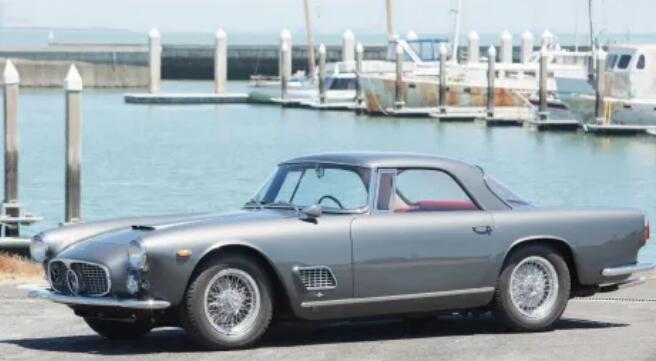Remembering the 3500 Series, Maserati's First Mass-Produced Car

Originally mounted with Pirelli Cinturato, the 3500 GT takes its name from a DOHC straight-six engine that displaces 3.5 liters. Fed from an 80-liter fuel tank, the six-cylinder lump is an all-alloy design with hemispherical combustion chambers. Given that Chrysler released the first-gen HEMI in 1950 for model year 1951, Giulio Alfieri surely was on top of his game.
Derived from the 350 S straight-six mill, this powerplant dons two distributors, twin spark plugs, an automobile water pump shaft bearing, as well as domed pistons. From a compression ratio of 8.2:1 versus 9.8:1 in the 350 S, the 3500 GT belts out 220 horsepower and a fair amount of torque while the 3500 GTi levels up to 235 ponies. For reference, the 5.4-liter FirePower HEMI V8 in the 1951 Chrysler New Yorker was originally rated at 180 ponies.
From the standpoint of design, the Touring Superleggera aluminum bodywork fits the grand tourer’s character just nicely. The gracious lines of the exterior are complemented by full-width chrome bumpers, a chromed trident logo in the center of the front grille, and a rather sexy hood scoop.
The rear fenders bring the point home with a finned theme and chrome strips that run from the rear window to the taillamps. Opening the driver’s door reveals fine leather upholstery on all four seats, Jaeger instrumentation that includes a 250-kph (155-mph) speedo, an ashtray next to the gear lever, vinyl for the top of the dash, and a grab handle for the front passenger. Great-looking quilted vinyl was originally used for the trunk. In terms of standard equipment, highlights include a radio and two electric windows.
Capable of hitting 100 kilometers per hour (62 miles per hour) in roughly 7.5 seconds, the 3500 GT tips the scales at 1,300 kilograms (2,866 pounds; dry weight). This model inspired Ferrari to introduce its first 2+2 grand tourer, the 250 GTE, in 1959. Including the fuel-injected GTi, all other body styles, and prototypes, the 3500 series outsold the Fezza to the tune of 2,226 examples of the breed versus 954 units for the Prancing Horse of Maranello.
Unveiled at the Turin Motor Show in 1958, the Vignale-bodied Spyder rides on a shorter wheelbase (2,500 millimeters). In addition to Touring and Vignale, coachbuilders that had a go at the 3500 series include Bertone, Frua, and lesser-known firms like Carrozzeria Allemano, Boneschi, and Moretti.
Zagato, which soldiers on as the only independent Italian coachbuilder, proposed a 3500 GT-based design in 1957. Even though sales brochures were printed, no bodies were produced by the Terrazzano-based outfit.
1.The news above mentioned with detailed source are from internet.We are trying our best to assure they are accurate ,timely and safe so as to let bearing users and sellers read more related info.However, it doesn't mean we agree with any point of view referred in above contents and we are not responsible for the authenticity. If you want to publish the news,please note the source and you will be legally responsible for the news published.
2.All news edited and translated by us are specially noted the source"CBCC".
3.For investors,please be cautious for all news.We don't bear any damage brought by late and inaccurate news.
4.If the news we published involves copyright of yours,just let us know.
Next Lotus Elan: The Quintessential Lightweight Sports Car
BRIEF INTRODUCTION
Cnbearing is the No.1 bearing inquiry system and information service in China, dedicated to helping all bearing users and sellers throughout the world.
Cnbearing is supported by China National Bearing Industry Association, whose operation online is charged by China Bearing Unisun Tech. Co., Ltd.
China Bearing Unisun Tech. Co., Ltd owns all the rights. Since 2000, over 3,000 companies have been registered and enjoyed the company' s complete skillful service, which ranking many aspects in bearing industry at home and abroad with the most authority practical devices in China.


